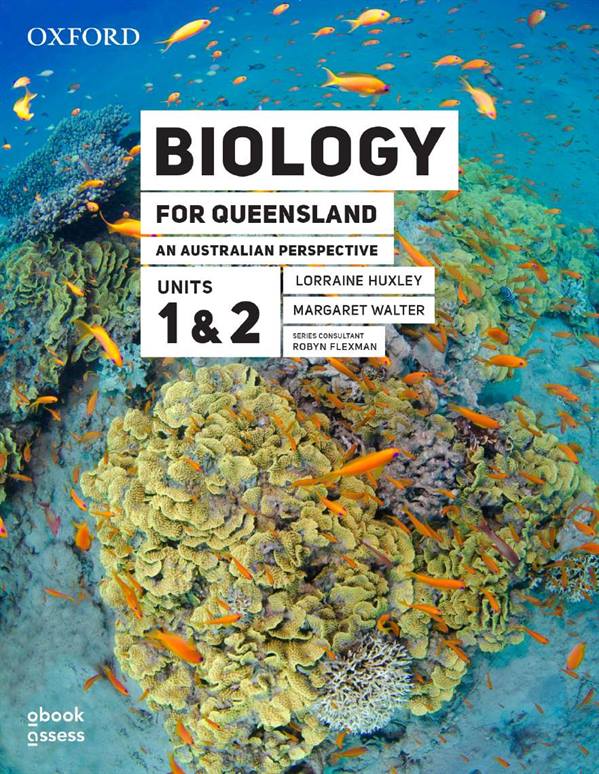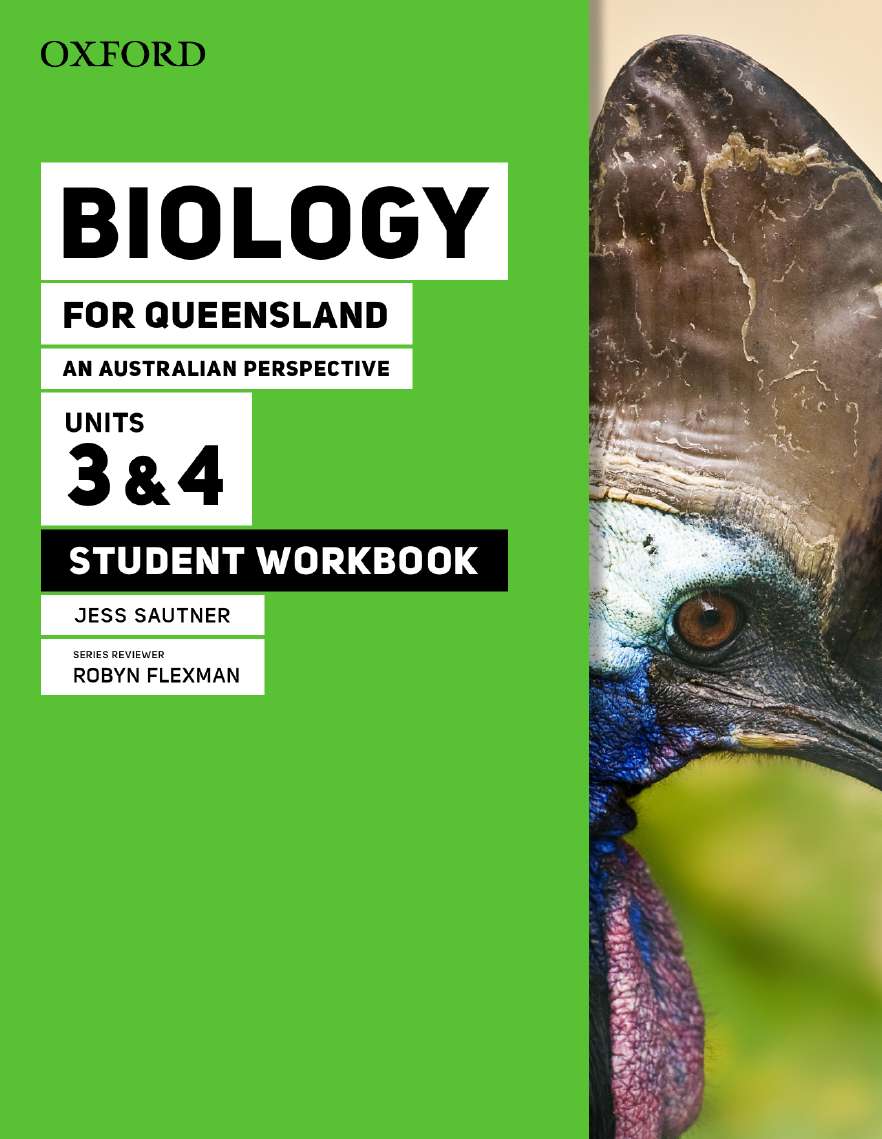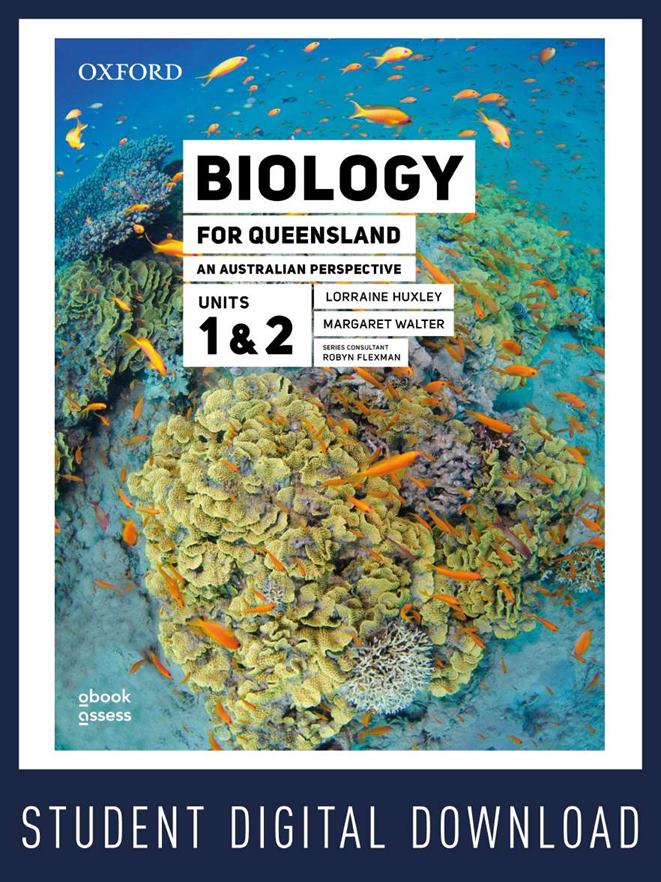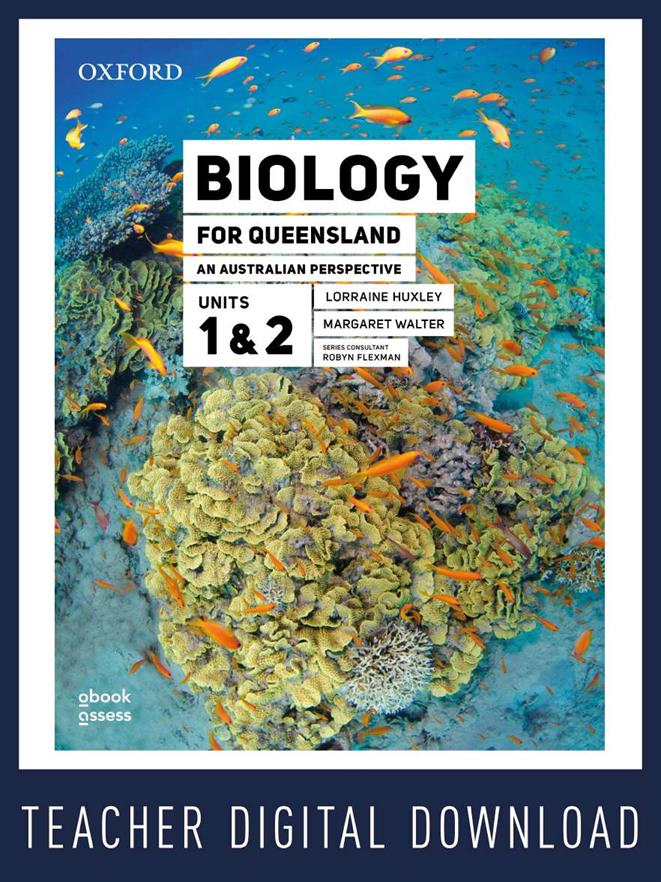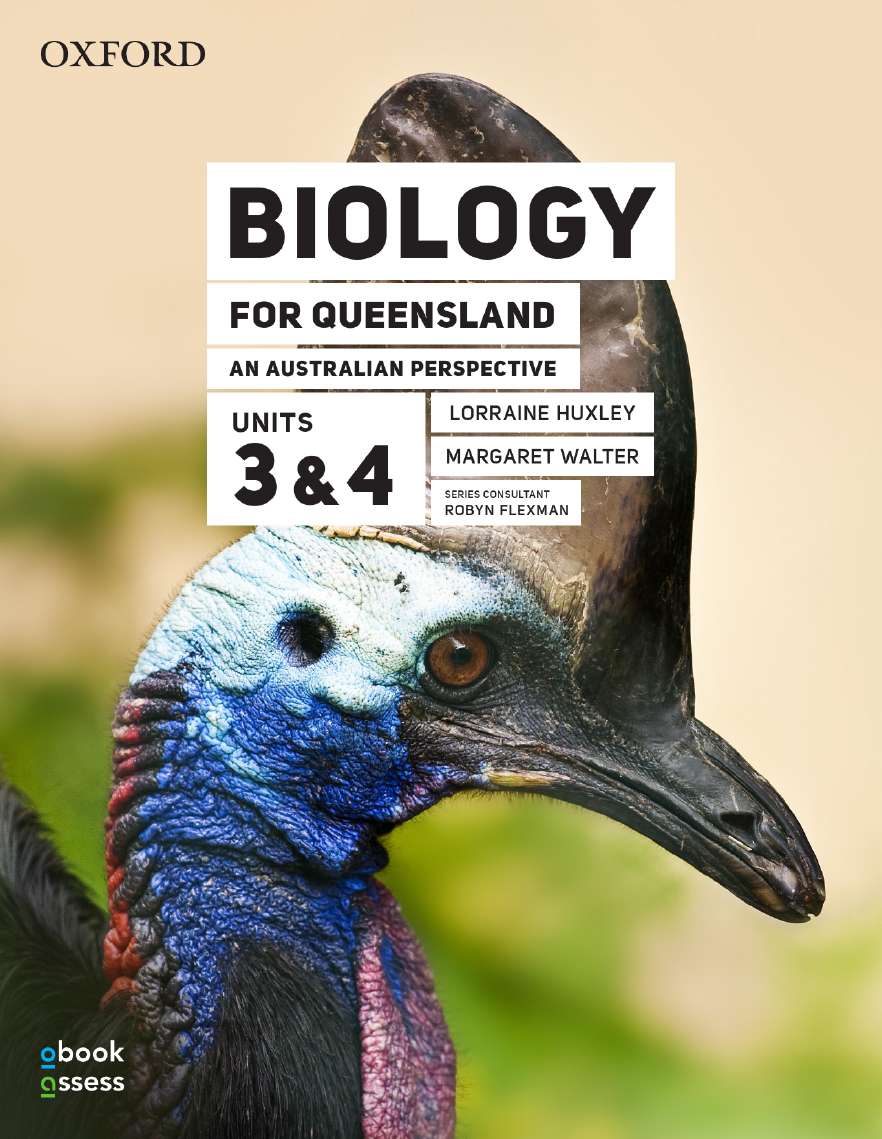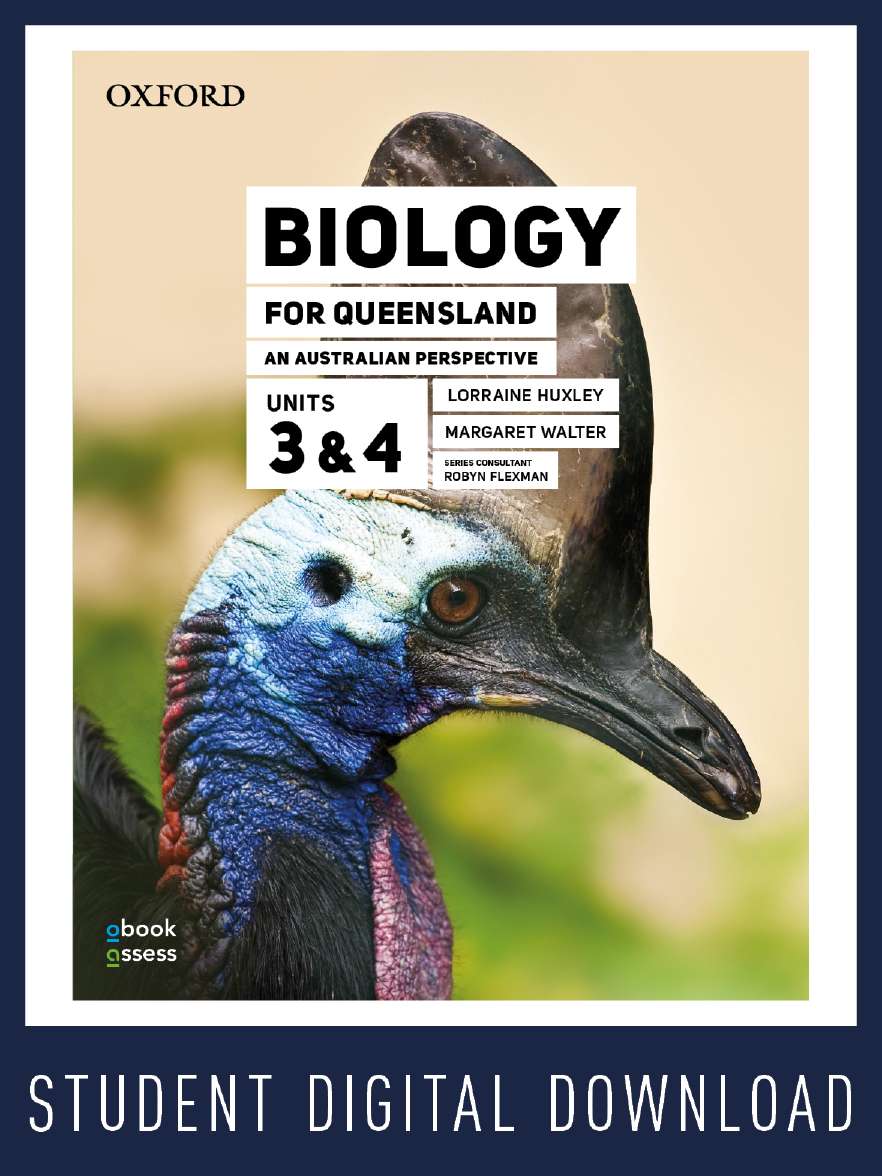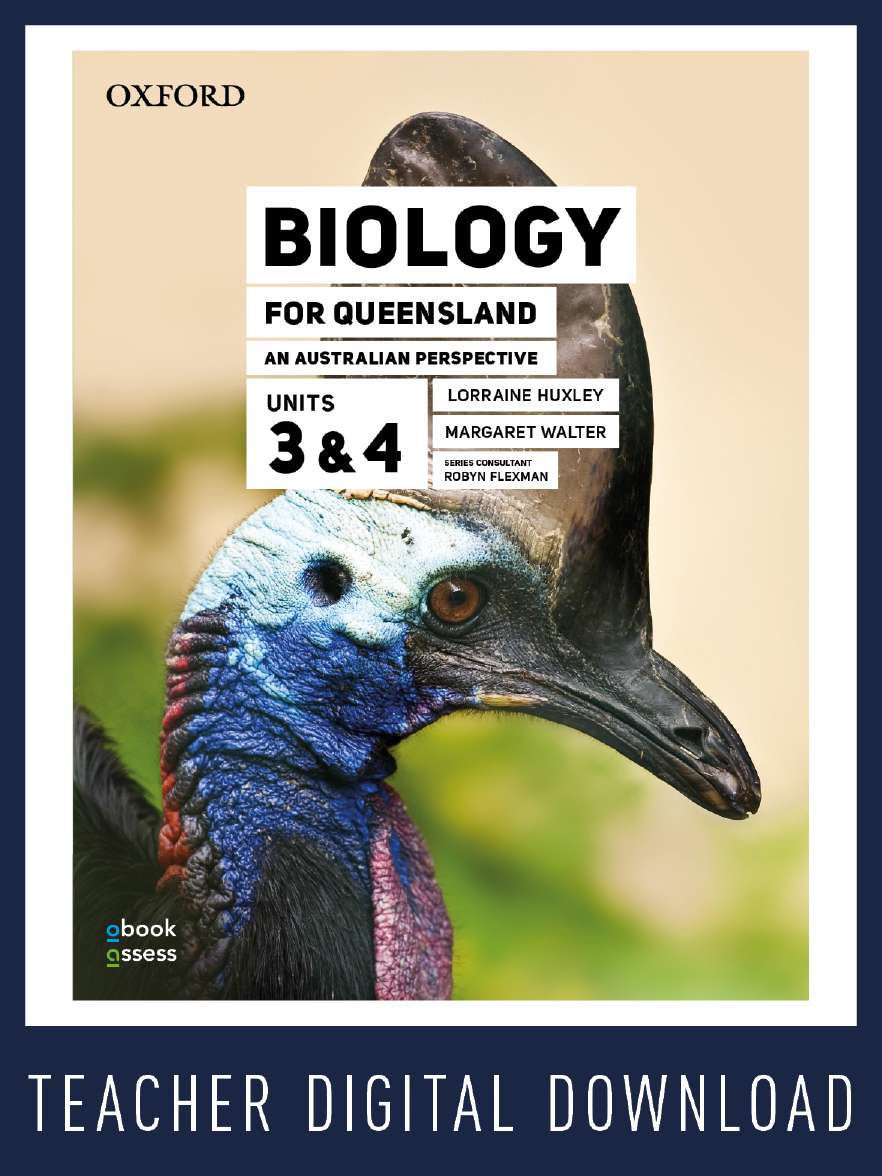Biology for Queensland Units 1&2 Student workbook
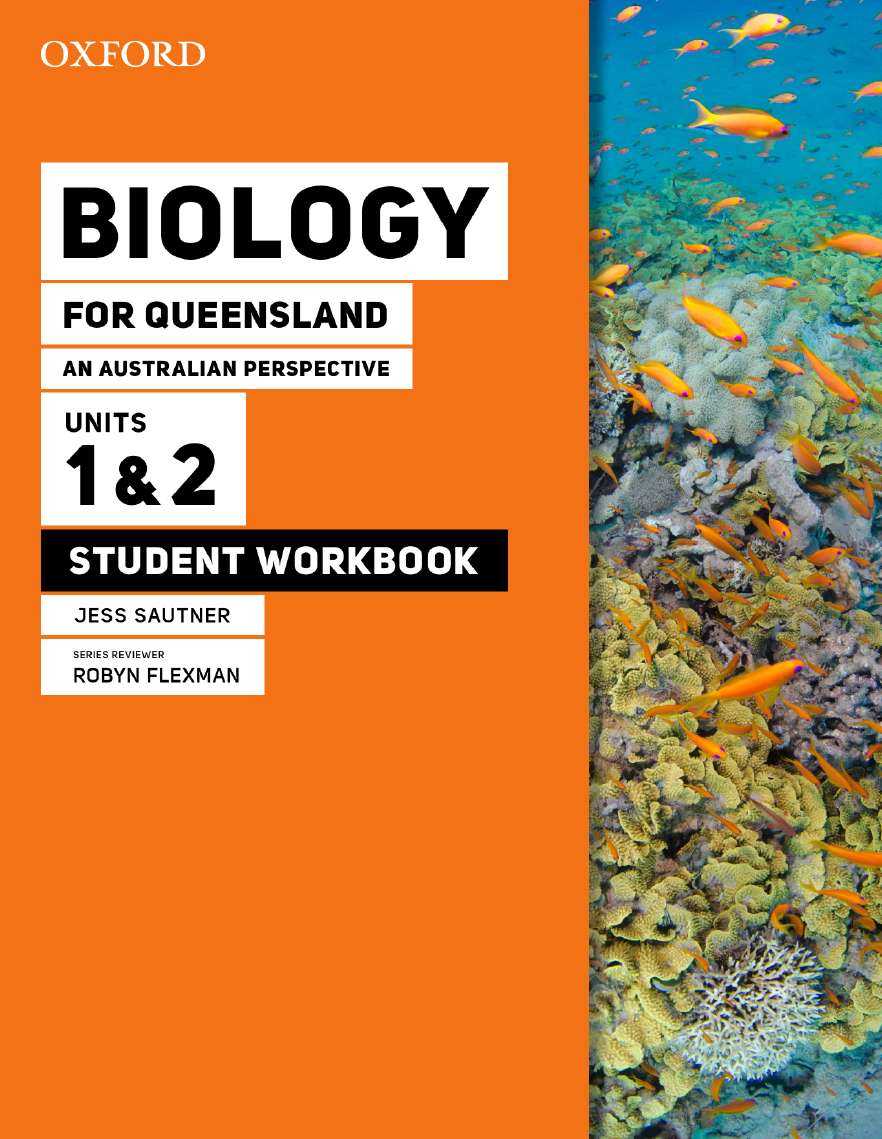
Biology for Queensland Units 1&2 Student workbook
|
ISBN: |
9780190320409 |
|
Binding: |
Paperback |
|
Published: |
17 Dec 2019 |
|
Availability: |
226
|
|
Series: |
$29.95 AUD
$34.99 NZD
Add To CartDescription
The new Queensland Senior Biology syllabus affects all aspects of teaching and learning – new teaching content, new course structure and a new approach to assessment. As EPAA Secondary Publisher of the Year 2017, 2018 and 2019, Oxford University Press is committed to helping teachers and students in Queensland reach their full potential.
Biology for Queensland: An Australian Perspective Student workbooks are standalone resources designed to help students succeed in their internal and external assessments. With an engaging design, full-colour photos and relevant diagrams throughout, the Student workbooks include:
- a Toolkit chapter focused on internal assessments and cognitive verbs
- Data drill activities that help students develop the key skills in analysis and interpretation required for the Data test
- Experiment explorer activities that support the modification of a practical as required in the Student experiment
- Research review activities that allow students to practise how to evaluate a claim and identify credible sources for the Research investigation
- Exam excellence activities that allow students to practice multiple choice and short answer questions in preparation for the external examination
- handy study tips throughout the chapters
- practice internal assessments for the Data test, Student experiment and Research investigation
- write-in worksheets for all mandatory and suggested practicals
- appendices such as the periodic table and formulas
- answers to all activities and practice assessments.
Contents
Chapter 1 Biology toolkit
Responding to cognitive verbs
Data test
Data drill 1: Analysing graphical data
Student experiment
Experiment explorer 1: Independent and dependent variables
Research investigation
Research review 1: Exploring CSIRO
UNIT 1: CELLS AND MULTICELLULAR ORGANISMS
Chapter 2 The chemicals of life
Data drill 2: Reading and calculating data
Experiment explorer 2: Enzymes in milk
Research review 2: Tips for researching online
Exam excellence 2
Chapter 3 Cell structure
Data drill 3: Surface area to volume ratios
Experiment explorer 3: Parts of a microscope
Research review 3: Creating a research plan
Exam excellence 3
Chapter 4 Cell function and energy
Data drill 4: Graphs and conclusions
Experiment explorer 4: Photosynthesis
Research review 4: Oral presentation skills
Exam excellence 4
Chapter 5 From cell to multicellular organism
Data drill 5: Tabulated data
Experiment explorer 5: Reading graphs
Research review 5: Critiquing news articles
Exam excellence 5
Chapter 6 Transport and gas exchange in animals
Data drill 6: Analysing graphical data and converting units
Experiment explorer 6: Identifying errors and adjusting methods
Research review 6: Online statistics
Exam excellence 6
Chapter 7 Exchange of nutrients and waste in animals
Data drill 7: Reading other forms of data
Experiment explorer 7: Experiment modifications
Research review 7: Researching claims
Exam excellence 7
Chapter 8 Plant systems – gas exchange and transport
Data drill 8: Recognising trends
Experiment explorer 8: Testing gas exchange
Research review 8: Using Wikipedia
Exam excellence 8
Unit 1: Practice Assessment
Unit 1 Data test
Unit 1 Student experiment
Unit 1 Research investigation
UNIT 2: MAINTAINING THE INTERNAL ENVIRONMENT
Chapter 9 Coordination and control
Data drill 9: Interpreting data in tabular form
Experiment explorer 9: Designing experiments
Research review 9: Using Google Scholar filters
Exam excellence 9
Chapter 10 Control of temperature and water balance
Data drill 10: Identifying events on a graph
Experiment explorer 10: Writing a research question and hypothesis
Research review 10: Up-to-date articles
Exam excellence 10
Chapter 11 Disease and its causes
Data drill 11: Number of bacteria
Experiment explorer 11: Independent and dependent variables
Research review 11: Writing your report
Exam excellence 11
Chapter 12 Identifying, monitoring and controlling disease
Data drill 12: Ratios and probability
Experiment explorer 12: Antibiotics
Research review 12: Quarantine/biosecurity
Exam excellence 12
Unit 2: Practice Assessment
Unit 2 Data test
Unit 2 Student experiment
Unit 2 Research investigation
Chapter 13 Practical manual
The effect of enzyme concentration on the rate of reaction
The cell as the building block of life
Use of the light microscope
Preparation and examination of wet mount specimens
Identifying organelles from electron micrographs
Modelling the selectively permeable cell membrane
Conditions necessary for photosynthesis
Separation of chloroplast pigments by paper chromatography
Respiration
Organisation of cells into tissues, organs and systems
The effect of temperature on the rate of reactions of an enzyme
The effect of pH on the rate of enzyme reactions
Investigation of plant leaves, stems and roots
The passage of water through flowering plants
Stomatal function
Factors affecting the rate of transpiration
Tolerance limits for water or salt balance in plant growth
A simple reflex arc – pupil response
The role of the leaf in plant osmoregulation
The effect of an antimicrobial on the growth of a microbial organism
Answers
Authors
Jess Sautner
Jess Sautner is an experienced Biochemist and works as a STEM outreach coordinator at Deakin University. She was previously a Science teacher at Bacchus Marsh Grammar and has extensive experience working with VCE Science students entering University. Previous to her work in Science education and communication she worked at CSIRO, CSL and as a microbiologist and virologist in industry.
Series reviewer: Robyn Flexman
Robyn is an experienced Biology teacher and Head of Science. She has been involved in the QCAA review panel in a number of roles and has also been involved in the endorsement process for the new SATE system. In 2011, she received a Peter Doherty Award for Outstanding Science Teacher. Robyn has also worked as a project officer for QMEA and presented at international conferences and CONASTA.
